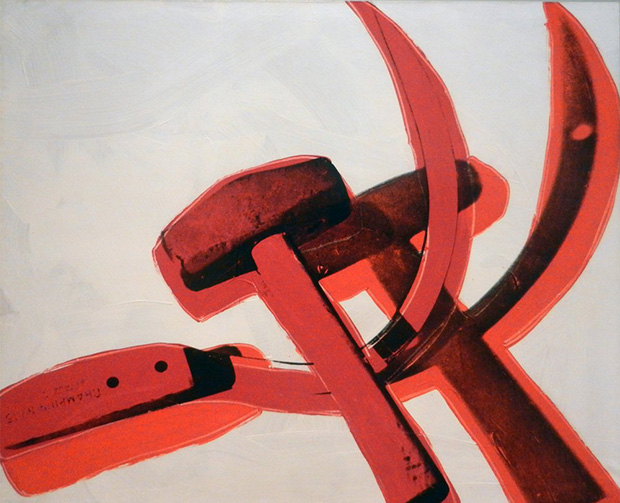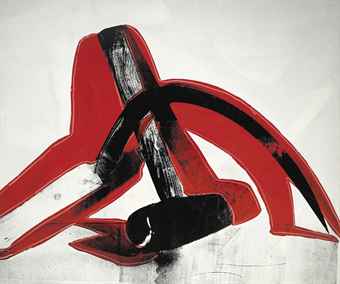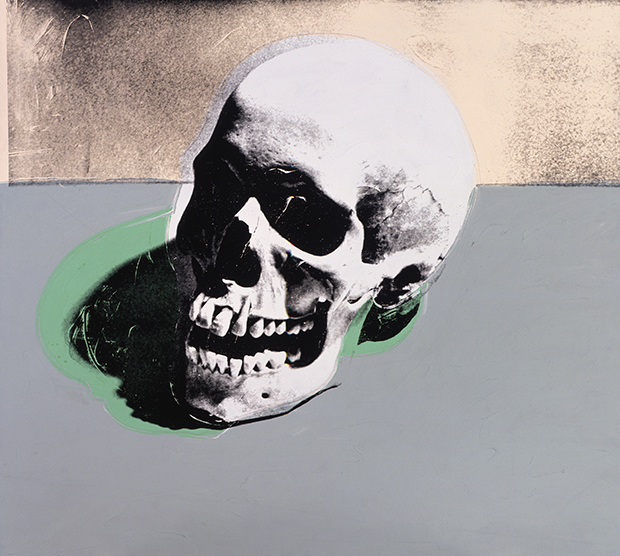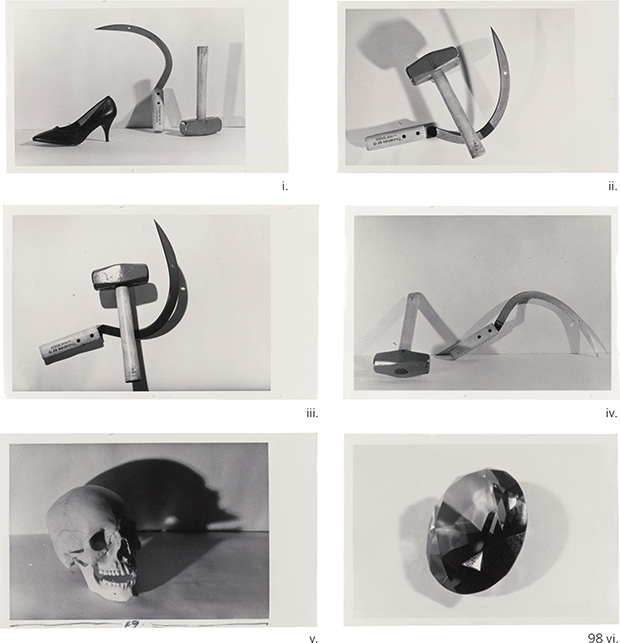
When Warhol painted the Hammer and Sickle
Did a working trip to Seventies Italy change Andy's political outlook?
What were Andy Warhol’s politics? His love of money and commerce is well established, as are his many portraits of socialites and international business people - among them Hyatt Hotel and Pritzker Prize founder Jay Pritzker - who were keen to be immortalised by him. Yet other pictures could be seen to lionize Chairman Mao, endorse the Green Party and vilify Richard Nixon.
In 1975, even casual observers of the pop artist’s work began to enquire about his politics, when he began to create a series of photographs and screen prints of hammers and sickles.
Warhol first became interested in this imagery following a business trip to Italy in late October 1975, when the country was in the grip of widespread left-wing protest and turmoil.
Warhol had begun to paint his portraits of Chairman Mao only a few years earlier, and in Italy the artist was asked constantly about his Mao pictures and his own political position.

While in Italy, he also came across the hammer and sickle symbol - originally conceived during the Russian Revolution, but later adopted by leftist labour movements in Italy and elsewhere – in graffiti.
Upon his return to New York, Warhol chose to incorporate the symbol into a new series of pictures and, unsatisfied with existing representations of the hammer and sickle, chose to shoot his own still life, from which he developed his screen prints.
The hammer and sickle series forms part of a larger set of still lifes, which include better-known works, such as his skull photographs and drawings. The photos were actually taken by Warhol’s long-standing collaborator Edward Wallowitch, and some assemblages included a copy of The Philosophy of Andy Warhol, which Warhol was promoting at the time.
It’s unclear whether Warhol, in producing these works, wanted to align himself with any leftist cause. When asked about the pictures political content, Warhol simply said “we went off to the store and bought a hammer and sickle. Bob [Colacello, editor of Warhol’s Interview magazine] has a lawn to cut.”

On another occasion he claimed, in the interests of political balance, he conceived the hammer and sickle images for Communism and the skull – a common insignia in Nazi uniforms – for fascism.
Though perhaps with Warhol – who once happily explained he was “a deeply superficial person” – it’s better to look at the pictures’ surfaces, rather than into their depths.
The hammer and sickle still lifes are remarkable within Warhol’s oeuvre, as he tended not to produce very many still life works. As we explain in volume four of our Catalogue Raisonné, these mid-Seventies works are remarkable for their division of the background into two distinct spatial zones, as opposed to his flatter paintings, and the works’ shadow play, which eventually culminated in a near-abstract series entirely devoted to shadows.
Today, getting on for three decades after the fall of the Berlin Wall, pop-art collectors across the political spectrum have grown to love Andy’s hammer and sickles.

The fashion accessories designer and occasional fundraiser for Britain’s centre-right Conservative party, Anya Hindmarch, has included Andy’s hammer and sickle photographs as part of a lot in her specially curated Sotheby’s sale, taking place in London tonight, 20 September – proof that Andy, like all great artists, cross the divide.
For greater insight into Warhol’s art, life and politics, browse through our wide array of Warhol titles, which include this collection, this compact introduction, this massive overview, this celebrity portrait collection, and this comprehensive, multivolume catalogue raisonné. Meanwhile, for more on the intersection of graphics and 20th century politics get Iron Fists anf for some great graphics around political dissent get Liz McQuiston's excellent Visual Impact: Creative Dissent in the 21st Century.